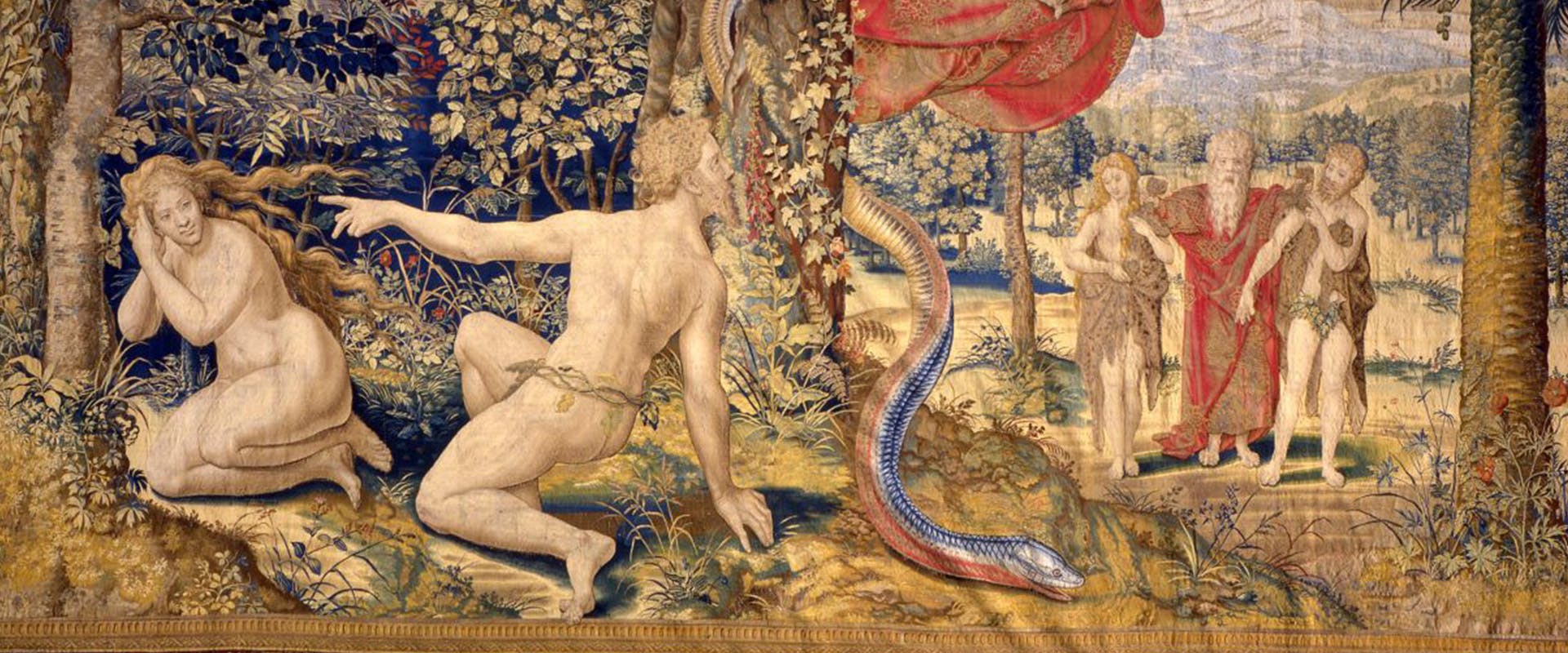Three tapestries for a future museum
The Sala Bianca in Palazzo Pitti is the ideal setting for the exhibition Three Tapestries for a Future Museum. On display are three tapestries, truly magnificent in terms of their quality of execution and size, representative of the Medici, Flemish from Brussels, and French Gobelins manufacturing, the three main centres of the Florentine tapestry collection belonging to the Uffizi Galleries.
The exhibition has been conceived as a spectacular preview of the Tapestries Museum, which will be opened shortly in the right Rondò of Palazzo Pitti, and where the 950 specimens - including tapestries, doors and overdoors - will be exhibited in rotation for conservation reasons, among which the Medici made 788. At the same time, the remainder were purchased or received as gifts from the Medici on various occasions, thus forming the Uffizi Gallery collection.
The exhibition opens with the Wild Boar Hunt with the Harquebus, from the Hunts series commissioned by Duke Cosimo I de' Medici for the Villa of Poggio a Caiano, the sumptuous country residence built by Lorenzo the Magnificent according to a design by Giuliano da Sangallo at the end of the 15th century.
Woven between 1566 and 1577 by the Florentine tapestry makers Giovanni Sconditi and Benedetto Squilli from cartoons by the Bruges painter Giovanni Stradano, the series, already famous in the 16th century thanks to 1570 engraved prints, was initially composed of twenty-eight tapestries, nine of which are still in the Uffizi collection.
The tapestry depicts sequential scenes of wild boar hunting with a rifle or arquebus, from the weapon's loading on the proscenium to the moment before firing it in the background. The muzzle of the prey is half-hidden among the trees at the bottom of the composition, in the top right-hand corner. The decoration of the border is reminiscent of the iconography of the central part of the tapestry, with the boar's head in the centre of the upper and lower edges.
The second Flemish tapestry depicts Adam and Eve reprimanded by God after their sin. It belongs to the series of the Stories of Creation, consisting of seven pieces purchased by Duke Cosimo I de' Medici and his wife Eleanor of Toledo in 1551 from the Van der Walle, well-known Antwerp merchants. The weavers Jan van Tieghem, his brother-in-law Frans Ghietels and the merchant-tapestry maker Jan de Kempeneer were among the most famous in Brussels. Pieter Coecke van Aelst, who conceived the drawings transferred to cartoons from his workshop, belonged to the generation of Flemish painters influenced by the Italian Renaissance. The characters in the foreground, silhouetted against a broad landscape, seem to echo the layout created in the vaults of the Vatican Loggias, frescoed by Raphael and his collaborators in 1519.
In this tapestry, according to Flemish tradition, two episodes are represented in sequence, immersed in dense vegetation: the moment of sin on the proscenium and the next, with the shame of one's nudity, in the background. The classical, sculptural nudes of the protagonists in the foreground and the bright, low horizon reveal the Italian influence. The figure of God is reminiscent of those frescoed in the first vault of the Vatican Loggias and the crouching pose of Eve is similar to that in Michelangelo's Temptation of Adam and Eve in the Sistine Chapel. The Flemish-style grotesques in the borders are one of the earliest examples of this genre, of which Coecke himself was one of the initiators.
The third tapestry, depicting Water, is part of the first edition of the Four Elements, which inaugurated the Royal Factory of Gobelins activity, established in 1662 by Jean-Baptiste Colbert, who had entrusted its artistic direction to Charles Le Brun. The series, which had already been in production since 1664, was donated in August 1669 by Louis XIV to the future Grand Duke of Tuscany, Cosimo III, who was visiting Paris.
The element of Water is symbolised by Neptune and Amphitrite driving a chariot drawn by sea horses flanked by Tritons. Amphitrite is holding a shield with royal symbols and the sun, the emblem of Louis XIV. The two dolphins holding the arms of the French crown in the centre of the upper frieze are also a reference to this divinity. The prow of the warship in the scene and the two vessels in the middle of the side borders, decorated with shells, bundles of oars, harpoons, tridents, etc., allude to the French monarchy's aspirations to dominate the seas.
The exhibition, promoted by the Ministry of Cultural Heritage and Activities and Tourism with the Uffizi Galleries and Firenze Musei, is curated by Lucia Meoni and coordinated by Alessandra Griffo.
